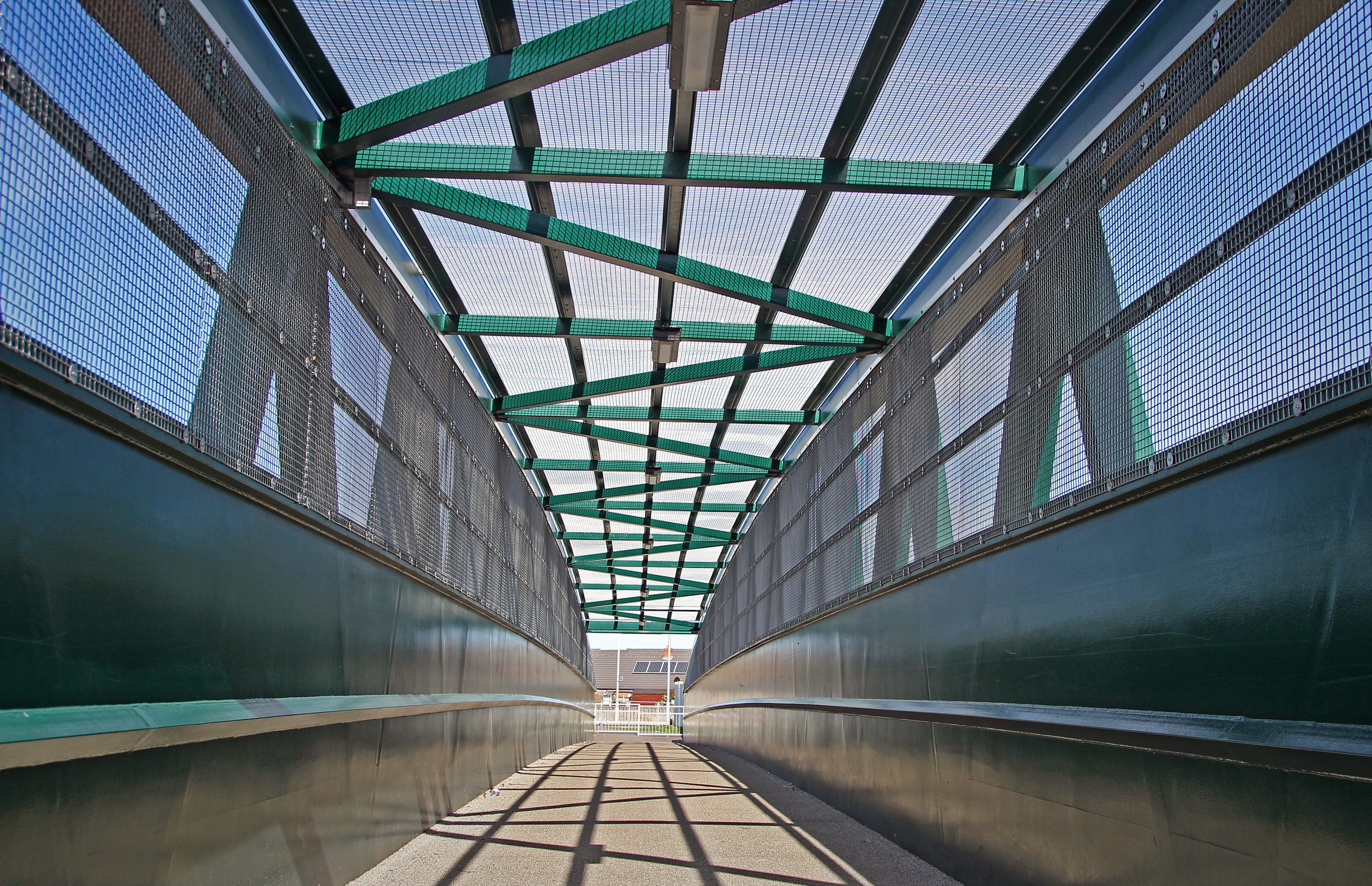
The Albert Hugo Friday Bridge
Project outline:
Design and build of a 52 meter pedestrian/cycleway bridge with associated footpaths and lighting to provide access to a new business park.
Location:
Herne Bay, Kent
Client:
Urban and Civic
We provided:
Civil & structural engineering services
Project management
Key collaborators:
Urban and Civic – developers – developing local area
Nusteel Structures – built the bridge offsite
KCC – regulatory and advisory


We delivered the civil engineering design package and structural checks for this complex and multi-faceted project. We also provided design co-ordination and management, bringing the whole team together in a spirit of constructive collaboration.
About the works:
Works included concrete piling, foundations, abutments, surface water drainage, existing service diversions, lighting, fencing, associated landscaping and the construction of adjoining footpaths to connect to the boulevard within the new Altira Business Park.
A significant challenge overcome…
The final design called for steel sheet driven piles to the perimeter of the foundation, with reinforced concrete piles to be installed at specific points. Piletec Geotechnical Ltd, a specialist sub-contractor from our supply chain, carried out the pile design, taking in all the governing factors such as load transfer, lateral resistance, hydrostatic uplift and location. The retaining walls and bridge bases were then fabricated on site using reinforced concrete to a specific design mix and placed on top of the concrete pile caps.
All of the enabling works, including excavation, piling, shuttering, reinforcement, concreting and reinstatement, were carried out in a green zone working area – an area of protection that separates workers on the railway line from train movements – with site wardens monitoring the sites.
Additional temporary works included the design and construction of crane pads, concrete abutments and bearing shelves.
Installing the bridge:
Installation of the main footway bridge required a specific methodology to minimise disruption.
We devised a programme that was approved by all key collaborators and stakeholders, including Network Rail, the local authority, Highways England, the Environment Agency, local residents and the crane company.
Prior to the lift date, we installed a specially designed crane lift pad and arranged for additional temporary road widening for the delivery of a 1000t crane and the bridge itself. We also arranged 12-hour disruptive possession on the rail lines, so the bridge could be lifted into place.
A standout memory of the project…
On installation day, two smaller cranes were used to erect the 1000t crane, ready to do the heavy lifting. As crowds of residents and the press looked on from a nearby vantage point, the larger crane then raised the 52m bridge into position in a single lift. Afterwards, the smaller cranes were used again to dismantle the 1000t crane.
Once the main footbridge was set into position and the plant removed from site, the groundwork to the surrounding area on both sides of the bridge was carried out. These included new footpath and landscaping works, fencing, road widening, lighting and signage.
Praise for our combined efforts:
The bridge was named to recognise and honour the sacrifice of a World War II RAF pilot who tragically lost his life in the nearby area. It was officially opened by the local Mayor, who championed the project as a great example of collaboration, with local residents once again coming out to mark the occasion.
Need help with your project?
Contact us to see how taking a joined up approach could benefit you.




